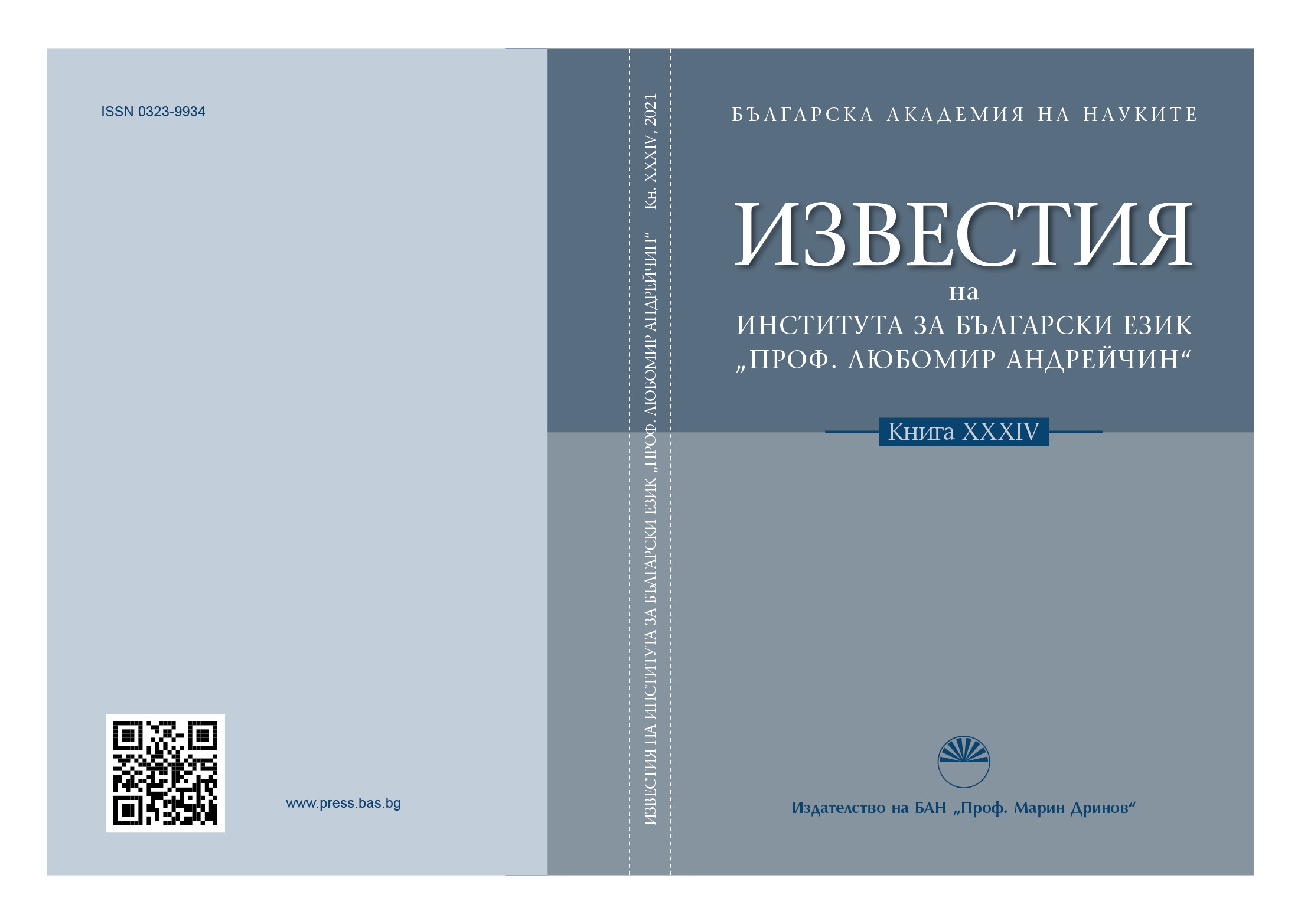СЛУЖЕБНИТЕ ДУМИ В ПОЛЕТО НА ИЗБОРА НА СЛАВЯНСКИТЕ КНИЖОВНИЦИ: БЕЛЕЖКИ ВЪРХУ ПРЕДЛОГА прѣзъ
THE FUNCTION WORDS IN THE FIELD OF CHOICE OF SLAVIC WRITERS: NOTES ON THE PREPOSITION прѣзъ
Author(s): Mariyana Tsibranska-KostovaSubject(s): Language studies, Language and Literature Studies, Theoretical Linguistics
Published by: Институт за български език „Проф. Любомир Андрейчин“, Българска академия на науките
Keywords: през; juridical discourse; function words in medieval Bulgarian language
Summary/Abstract: The article analyzes some data for the use of the preposition прѣзъ in twojuridical texts, related to the South of Slavs, namely: the Procheiros nomos from the SouthernSlavonic Kormchaya book with commentaries according to its Ilovitsa copy from 1262,and the earliest preserved Nomocanon in the Bulgarian manuscript repositories – Ms. Slav.№ 1160 from the Church Historical and Archive Institute to the Saint Synod of the BulgarianOrthodox Church, dated from the 60–80 years of the 14th century. The main goal is to reveal its semantic and functional characteristics by using examples of clear contextualization andfrom one and the same genre. It is known that this preposition has not been recorded inthe classical Old Bulgarian (Old Slavonic) manuscripts from 10th–11th centuries. During thisperiod its equivalent preposition is чрѣсъ. Provided are comparisons with other translatedSlavonic juridical texts.The article analyzes some data for the use of the preposition прѣзъ in two juridical texts, related to the South of Slavs, namely: the Procheiros nomos from the Southern Slavonic Kormchaya book with commentaries according to its Ilovitsa copy from 1262, and the earliest preserved Nomocanon in the Bulgarian manuscript repositories – Ms. Slav.№ 1160 from the Church Historical and Archive Institute to the Saint Synod of the Bulgarian Orthodox Church, dated from the 60–80 years of the 14th century. The main goal is to reveal its semantic and functional characteristics by using examples of clear contextualization and from one and the same genre. It is known that this preposition has not been recorded inthe classical Old Bulgarian (Old Slavonic) manuscripts from 10th–11th centuries. During thisperiod its equivalent preposition is чрѣсъ. Provided are comparisons with other translated Slavonic juridical texts.
Journal: Известия на Института за български език „Проф. Любомир Андрейчин"
- Issue Year: 2021
- Issue No: XXXIV
- Page Range: 42-55
- Page Count: 14
- Language: Bulgarian, Old Bulgarian

